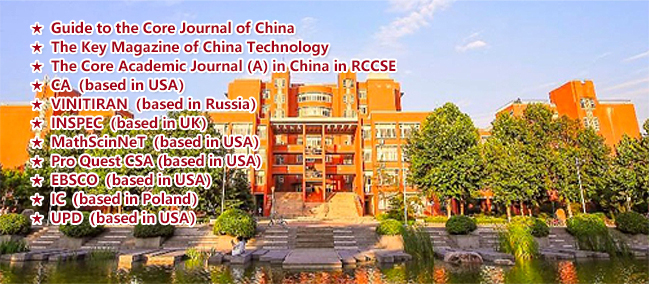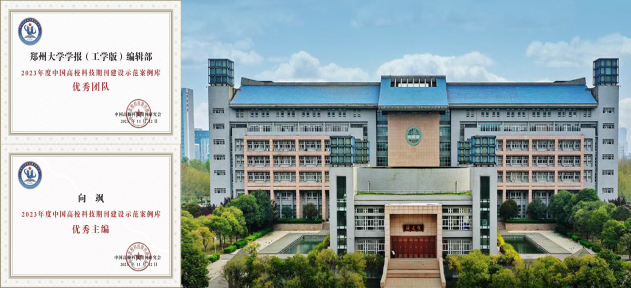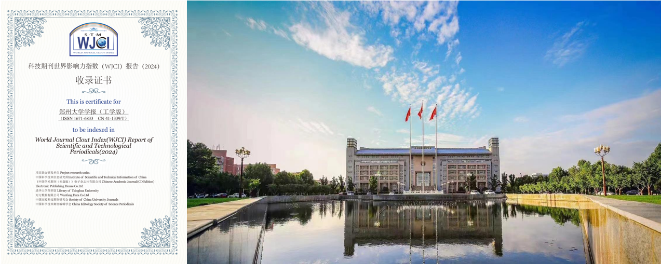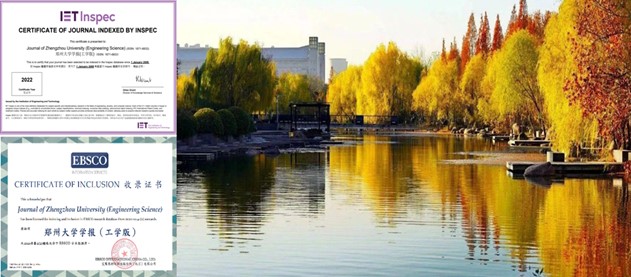User Login
Article Search
Statistics
- Today's visit:149673
- The line number:3257
- Traffic statistics:376995657
- Adaptive Variable Gain Transmission Ratio Design for Automotive Steer-by-wire Systems
- Improved A∗ Algorithm for AGV Path Planning Based on Obstacle Density Prioritization Strategy
- Research of Mobile Edge Computing for Future Mobile Communications: A Review
- Summary of New Group Intelligent Optimization Algorithms
- A Review on Status and Prospects of Tendon/Cable Driven Continuum Robot
2025 volumne 46 Issue 06
SUN Gangcan1,2, ZHAO Xinrui1, HAO Wanming2, PENG Shumin2
DU Liming1, QU Dan1,2, ZHANG Chuancai2, XI Yangli1
WANG Hairong1,2, WANG Yimeng1, ZHOU Beijing1, YI Zhihang1
Microbial Data Augmentation Algorithm Based on Feature Transformation and Minority Clustering[23-31]
WEN Liuying, ZHENG Tianhao
ZHU Xiaodong, REN Chunxiao, LIU Xiaolan, CHEN Ke, YU Chunming
LIU Minglin, ZHOU Chuanjin, WANG Runze, WANG Chao, CAO Yangjie
RAO Zhuang1, DING Dazhao2, WANG Yijing2
MU Xiaoxia1, ZHANG Hongmei2, SONG Xuekun3, LI Juntao4
ZHANG Jianhua, ZHANG Mengjia, HUANG Dehao, ZHAO Si
WANG Mingdong1, ZHOU Zhengyu1, YANG Hongjie2, LI Zhongwen1
WANG Yaoqiang1,2, LI Wuxiang1,2, HAN Jing1,2, LIANG Jun1,3, YUAN Jia1,2
A Rolling Bearing Remaining Useful Life Prediction Method Based on Bayesian Change Point Detection[93-101]
LEI Wenping1, ZOU Dongliang2, CHEN Shijin2, HUANG Guangzhong1, DONG Xing1
Optimization Method for Last Mile Delivery Considering Supply Dynamics of Crowdsourced Personnel[102-111]
LI Manman, LEI Hailong, ZHAO Boxuan
LIANG Jie, HU Chengjun, YANG Jiong, GAO Lin
ZHAI Shufang1,2, DU Hongkun1, TIAN Hao1, LI Kang1, WANG Yihan1
ZHANG Bei1, GUO Yufeng1, ZHONG Yanhui1, LI Xiaolong1, LIU Jianyang2, WANG Yilong1
DOU Ming1,2, CAO Yingshu1, MI Qingbin1, DING Junxiang2, WANG Han1, PAN Deng3
LENG Fei1, JIANG Yong1, YU Jun2, CHEN Siyuan1
Bi Ying,Xue Bing,Zhang Mengjie
Wang Wen1,Hu Haoliang1,He Shitang1,Pan Yong2,Zhang Caihong3
Li Yanyan 1,Yang Haotian 2,Zeng Yufan 3
Numerical Simulation of Multi-phase Flow Mixing in Stiring Tank Based on EDEM-FLUENT Coupling[79-84]
Wang Jianming; Qiu Qinyu; He Xunchao
Preparation of Zirconium Oxide / Graphene Composites and their Adsorption Properties for PO43-[23-28]
Shi Chunyan1,Fan Bingbing1,Li Yaya1,Hu Yongbao1,Zhang Rui2
Semi-coupled Dictionary Learning Super-resolution Reconstruction Model with Detail Constraint Factor[59]
Huang Yuda; Wang Yanran; Niu Sijie;
Han Chuang, Wu Lili
Optimized Echo State Network on the Basis of Mutual Information and Just-In-Time and its application[1-6]
Zhang Heng, Wang Heshan
Zhao Shufang, Dong Xiaoyu
CHEN Deliang,DONG Huina,ZHANG Rui
Zhou Junjie, Wang Pu, Zhou Jinfang
Jiang Yang1,Guo Jiankun 1,Wang Xiaomou 2,Hou Chaoqun 3
Sheng Zunrong1,Xue Bing1,Liu Zhouming1,Wei Xinli2
Mao Xiaobo, Zhang Qun,Liang Jing, Liu Yanhong
Li Yifeng, Mao Xiaobo, Yang Yihang, Zhu Feng
Li Haibin1,Ke Shengwang2,Shen Yanjun2
Maling1,Jiang Huiqin1,Liu Yumin2
Sun Xiaoyan, Zhu Lixia, Chen Yang
Liang Jing1,Liu Rui1,Qu Boyang2,Yue Caitong1
Liu Qian; Feng Yanhong; Chen Yingying;
Liu Guangrui; Zhou Wenbo; Tian Xin; Guo Kefu
FANGShuqi1,2,HELiping1,ZHANGLonglong1,CHANGChun1,2,BAI Jing1,2,CHENJunying1,
LIU Zhenghua1, WANG Jing2,DU Haiying’1,2
JIANG Jian-dong1 ,ZHANG Hao-jie1 ,WANG Jing2
The filtration method of cliff point cloud vegetation based on the surface orthographic projection[77-82]
Li Cailin, Chen Wenhe, Wang Jiangmei, Tian Pengyan, Yao Jili
Improved AFSA Optimization of SVM in The Application of Magnetic EAS Acoustic Signal Detection[35-38,83]
Deng Jicai, Geng Yanan
ZHANG Chunjiang1,2,TAN Kay Chen2,GAO Liang1, wU qing3
JIAO Liu-cheng,YAO Tao
Sintering Furnace System Identification Based on Particle Swarm Algorithm and Neural Network Control[39-43]
Cao Ben, Yuan Zhong, Yu Liu Hong
Mao Xiaobo, Hao Xiangdong, Liang Jing
Zhao Huadong, Jiangnan, Lei Chaofan
Xiao Junming, Zhou Qian, Qu Boyang, Wei Xuehui
Dong Chee-hwa1,Wang Guoyin2,Yongxi3,Shi Xiaoyu2,Li Qingliang4
LIU Min-shan,XU Wei-feng ,JIN Zun-long,WANG Yong-qing,WANG Dan
Liu Yanhong, Zhao Jinglong
Hu Xiaobing, Xie Zhenfang, Xie Ji, Xie Lili, Zhu Zhigang
FENG Dong-qing,XING Kai-li
Preparation of Supported Phosphotungstic Acid Catalyst andlts Application in the Synthesis of BEA[49-53]
WAN Ya-zhen,LIU Ya-nan,CHEN Di
Dai Pinqiang1,Song Lairui2,Cui Zhixiang3,Wang Qianting3
QU Dan, YANG Xukui, YAN Honggang, CHEN Yaqi, NIU Tong
SHI Lei, LI Tian, GAO Yufei, WEI Lin, LI Cuixia, TAO Yongcai
CHEN Deliang,DONG Huina,ZHANG Rui
RONG Xian,SONG Peng,ZHANG Jianxin,etc;
CUI Jianming1, LIN Fanrong1, ZHANG Di1 , ZHANG Luning1, LIU Ming2
WANG Hairong, XU Xi, WANG Tong, JING Boxiang
ZHANG Chunjiang1,2,TAN Kay Chen2,GAO Liang1, wU qing3
Li Yifeng, Mao Xiaobo, Yang Yihang, Zhu Feng
YU Kunjie, YANG Zhenyu, QIAO Kangjia, LIANG Jing, YUE Caitong
FANGShuqi1,2,HELiping1,ZHANGLonglong1,CHANGChun1,2,BAI Jing1,2,CHENJunying1,
WANG Dingbiao, WANG Shuai, ZHANG Haoran, WU Qitao, YANG Chongrui, WANG Guanghui
Fu Zhen1,Shen Wanqing1,Kong Zhifeng2,Zhang Chao2
Dai Pinqiang1,Song Lairui2,Cui Zhixiang3,Wang Qianting3
Li Lingjun, Jin Bingma, Yanli Han, Jie Hao, Wang body
Li Guang1, Zhang Heng2, Wang Jie2, Zhu Xiaodong2, Yue Caitong2
Zhao Shujun, Duan Shaoli, Zhang Xiaofang, Li Lei, Liu Xiaomin
Jia Rubin,Gao Jinfeng
Han Chuang, Wu Lili
Guo Yinan 1,Cheng Wei 1,Yang Huan 1,Yang Fan 1,2,Lu hope 1
Liu Ke 1;Gong Dunwei 2
LIU Na 1,2 , ZHENG Guofeng 1,2 , XU Zhenshun 1,2 , LIN Lingde 1,2 , LI Chen 1,2 , YANG Jie 1,2
Zhao Fengxia , Jin Shaobo , Li Jifeng
CHEN Xiaopan1 ,QU Jiantao1,2,ZHAO Yameng2, WANG Peng1, 2 , CHEN Yulin1
WANG Shenwen1,2, ZHANG Jiaxing1,2, CHU Xiaokai1,2, LIU Hong3, WANG Hui4
Shen Chao1,Yu Peng1,Yang Jianzhong1,Zhang Dongwei2,Wei Xinli2
ZHANG Anlin1, ZHANG Qikun2, HUANG Daoying2, LIU Jianghao2, LI Jianchun2, CHEN Xiaowen2
Cheng Shi 1,Wang Rui 2,Wu Guohua 3,Guo Yinan 4,Malembo 5,Shi Yuhui 6
Bi Ying,Xue Bing,Zhang Mengjie
Shen Xianzhang, Liu Xiaolan, Wu Tianfu, Minzun South
Liang Jing1,Liu Rui1,Qu Boyang2,Yue Caitong1
WANG Qinghai1,ZHAO Fengxia2,Ll Jifeng2,JIN Shaobo2
Dong Chee-hwa1,Wang Guoyin2,Yongxi3,Shi Xiaoyu2,Li Qingliang4
Sun Xiaoyan, Zhu Lixia, Chen Yang
Cong PeiLIANG,LIU Jianfei,ZHAO Zhiqiang,etc;
Ding Guoqiang1Zhang Duo1Xiong Ming1Zhou Weidong2
Li Jingli, He Pengwei, Qiu Zaisen, Li Yuanbo, Guo Liying
ZHENG Yuanxun ,YANG Peibing
Liu Guangrui; Zhou Wenbo; Tian Xin; Guo Kefu
Mao Xiaobo, Zhang Qun,Liang Jing, Liu Yanhong
ZHU Xiaodong,LIU Chong,GUO Yamo
Optimized Echo State Network on the Basis of Mutual Information and Just-In-Time and its application[1-6]
Zhang Heng, Wang Heshan
Wang Wen1,Hu Haoliang1,He Shitang1,Pan Yong2,Zhang Caihong3
Preparation of Zirconium Oxide / Graphene Composites and their Adsorption Properties for PO43-[23-28]
Shi Chunyan1,Fan Bingbing1,Li Yaya1,Hu Yongbao1,Zhang Rui2
MA Feng1,FU Zhi-peng1,FU Zhen3,CHEN Bin-hua1
JIANG Jian-dong1 ,ZHANG Hao-jie1 ,WANG Jing2
XIE Shao-bo1,2,LIU Xi-bin2,LI Si-guang2,WANG Jia2
Wang Dongshu, Tan Dapei, Wei Xiaoqin
Sheng Zunrong1,Xue Bing1,Liu Zhouming1,Wei Xinli2
Journal Information

Bimonthly(Started in 1980)
Administrated by:
The Education Department of Henan Province
Sponsored by: Zhengzhou University
Edited & Published by:
Editorial Office of Journal of Zhengzhou University( Engineering Sciences)
E-mail: gxb@zzu.edu.cn
Website: http://gxb.zzu.edu.cn/
Address: No.100 Science Avenue,100,
Zhengzhou 450001,China
Telephone: (0371) 67781276, 67781277
Chief Editor: ZHENG Suxia
Executive Chief Editor: XIANG Sa
Printed by: Shanxi Tongfang Knowledge Network Printing Co.,Ltd.
Distributed by: Office of Postal Distribution of Henan Proince
Distributed Abroad by: Publishing Trading Corporation,P.O.B.782, Beijing100011, China
Publication Scope: Public Publication
Periodicity:Bimonthly
Founded in:1980
Code of Domestic Distribution: 36-232
Code of Overseas Distribution: BM2642
ISSN:1671-6833
CN:41-1339/T
CODEN:ZDXGAN
The Education Department of Henan Province
Sponsored by: Zhengzhou University
Edited & Published by:
Editorial Office of Journal of Zhengzhou University( Engineering Sciences)
E-mail: gxb@zzu.edu.cn
Website: http://gxb.zzu.edu.cn/
Address: No.100 Science Avenue,100,
Zhengzhou 450001,China
Telephone: (0371) 67781276, 67781277
Chief Editor: ZHENG Suxia
Executive Chief Editor: XIANG Sa
Printed by: Shanxi Tongfang Knowledge Network Printing Co.,Ltd.
Distributed by: Office of Postal Distribution of Henan Proince
Distributed Abroad by: Publishing Trading Corporation,P.O.B.782, Beijing100011, China
Publication Scope: Public Publication
Periodicity:Bimonthly
Founded in:1980
Code of Domestic Distribution: 36-232
Code of Overseas Distribution: BM2642
ISSN:1671-6833
CN:41-1339/T
CODEN:ZDXGAN
QR Code




























